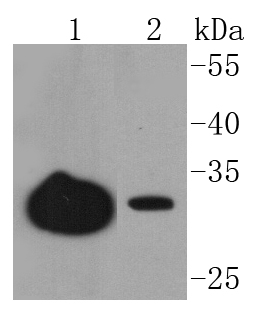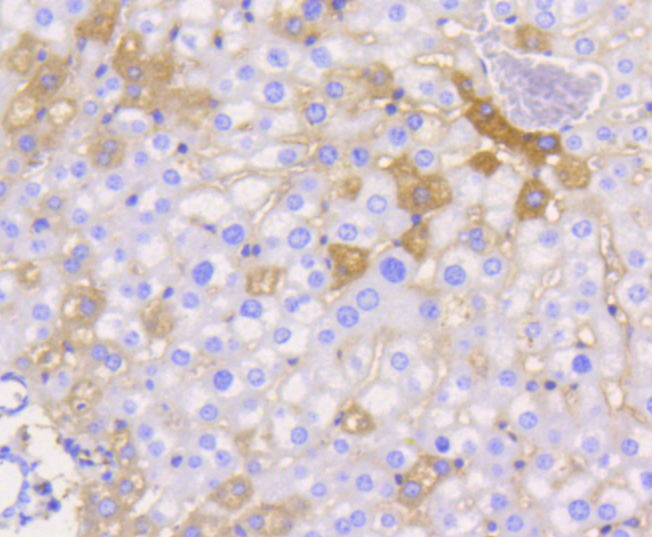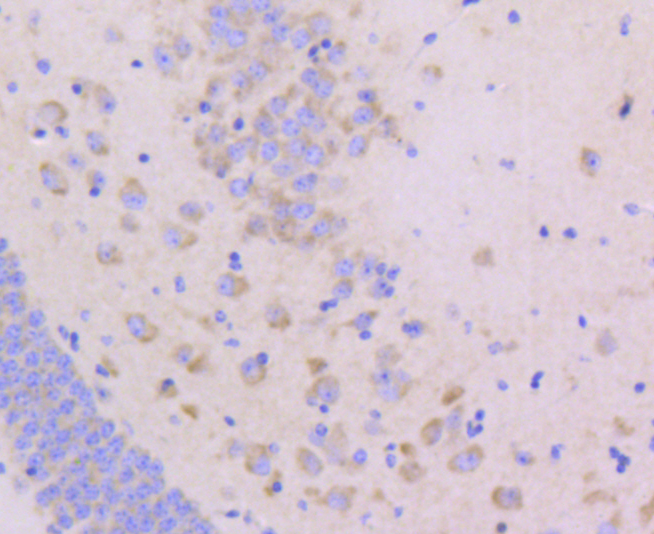Product Detail
Product NameJunctional Adhesion Molecule 1 Rabbit mAb
Clone No.SC60-07
Host SpeciesRecombinant Rabbit
Clonality Monoclonal
PurificationProA affinity purified
ApplicationsWB, IHC
Species ReactivityHu, Ms, Rt
Immunogen Descrecombinant protein
ConjugateUnconjugated
Other NamesCD 321 antibody CD321 antibody CD321 antigen antibody ESTM33 antibody F11 receptor antibody F11R antibody JAM 1 antibody JAM A antibody JAM antibody JAM-1 antibody JAM-A antibody JAM1 antibody JAM1_HUMAN antibody JAMA antibody JCAM antibody Jcam1 antibody Junction adhesion molecule 1 antibody Junction adhesion molecule, mouse, homolog of antibody Junctional adhesion molecule 1 antibody Junctional adhesion molecule A antibody KAT antibody Ly106 antibody PAM 1 antibody PAM-1 antibody PAM1 antibody Platelet adhesion molecule 1 antibody Platelet adhesion molecule antibody Platelet F11 receptor antibody PRO301 antibody UNQ264 antibody
Accession NoSwiss-Prot#:Q9Y624
Uniprot
Q9Y624
Gene ID
50848;
Calculated MW33 kDa
Formulation1*TBS (pH7.4), 1%BSA, 40%Glycerol. Preservative: 0.05% Sodium Azide.
StorageStore at -20˚C
Application Details
WB: 1:1,000-5,000
IHC: 1:50-1:200
Western blot analysis of JAM-1 on different lysates using anti-JAM-1 antibody at 1/1,000 dilution. Positive control: Lane 1: Hela Lane 2: Human liver
Immunohistochemical analysis of paraffin-embedded mouse liver tissue using anti-JAM-1 antibody. Counter stained with hematoxylin.
Immunohistochemical analysis of paraffin-embedded mouse brain tissue using anti-JAM-1 antibody. Counter stained with hematoxylin.
Junctional adhesion molecule (JAM) is a member of the immunoglobulin superfamily expressed in tight junctions of epithelial cells and endothelial cells. It is implicated in transendothelial migration of leukocytes. JAM is constitutively expressed on circulating monocytes, neutrophils, lymphocyte subsets and platelets. The JAM family consists of JAM-A, JAM-B and JAM-C, alternatively designated JAM-1, JAM-2 and JAM-3, respectively. JAM-A localizes with F-Actin at the cell-cell contacts and at the membrane ruffles. It is involved in cell to cell adhesion through homophilic interactions and plays a role in the organization of tight junctions and modulation of leukocyte extravasation. JAM-B interacts with discrete subsets of PBLs, suggesting that it may play a role in lymphocyte trafficking. JAM-B and JAM-C proteins are binding partners; JAM-C may be a functional JAM-B receptor. Specifically, JAM-B adheres to T cells through heterotypic interactions with JAM-C. The JAM-B/JAM-C interaction my play a role in T, NK and dendritic cellular inflammation.
If you have published an article using product 49009, please notify us so that we can cite your literature.
et al,Long-term effects of Nε-carboxymethyllysine intake on intestinal barrier permeability: Associations with gut microbiota and bile acids
, (2024),
PMID:
et al,Long-term effects of Nε-carboxymethyllysine intake on intestinal barrier permeability: Associations with gut microbiota and bile acids.
, (2025),
PMID:
39849698





 Yes
Yes



